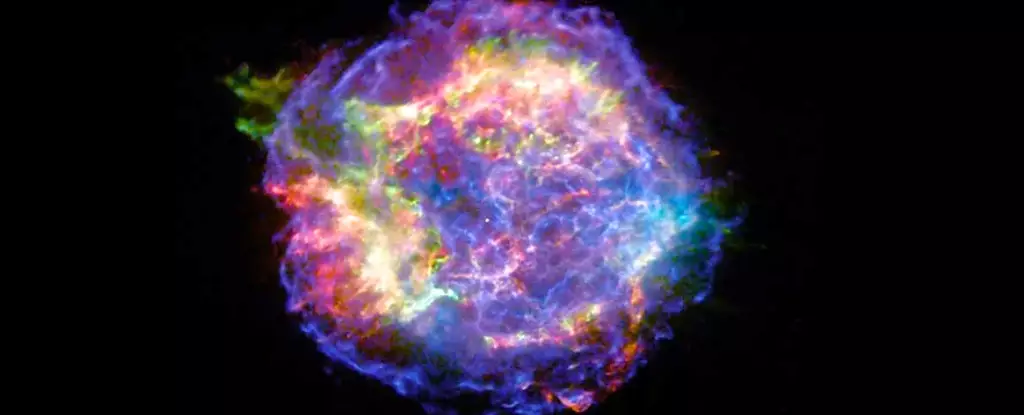Richard Feynman, the esteemed physicist, once emphasized the profound importance of understanding atoms, asserting that all matter—everything with mass—is constructed from these minuscule units. At its core, the atom is a tiny universe itself, composed of a dense nucleus packed with protons and neutrons, surrounded by a cloud of electrons. The interplay of positive and negative charges keeps the atom stable and electrically neutral. From the simplest hydrogen atom, with just one proton and one electron, to more complex elements with many protons and neutrons, atoms come in a remarkable diversity that shapes the material world. Yet, the genesis of these fundamental particles is a story woven deeply into the cosmic timeline.
Cosmic Origins: Forging the Lightest Elements
The saga of atomic creation began approximately 14 billion years ago with the Big Bang—the explosive birth of our universe. In the earliest moments after this event, the sizzling energy and heat were so intense that protons and neutrons collided with extraordinary force, giving rise to the nuclei of the very lightest elements—primarily hydrogen, helium, and a rare variant known as deuterium. This primordial synthesis, often called Big Bang nucleosynthesis, occurred within minutes as the universe was a roiling fireball hotter than a billion degrees Fahrenheit.
However, these nuclei couldn’t capture electrons and become complete atoms until the cosmic environment cooled significantly, about 400,000 years later. This epoch, misleadingly termed “recombination,” was when temperatures dropped to approximately 5,000 degrees Fahrenheit, cool enough for electrons to settle into orbits around protons and neutrons, forming stable hydrogen and helium atoms. At this point, the universe transitioned from an opaque plasma to a transparent stage where light could finally travel freely, setting the foundation for stars and galaxies to emerge.
Stellar Furnaces: Building the Heavier Elements
Hydrogen and helium, despite their ubiquity, comprise only a fraction of the diverse elements that populate planets and living beings. So where did heavier elements like carbon, oxygen, and iron come from? The answer lies in the cozy yet violent furnaces of stars. Within these stellar crucibles, atoms fuse under intense pressures and temperatures surpassing millions—a billion or more—degrees Fahrenheit. Fusion processes meld lighter nuclei into heavier ones by overcoming the natural repulsive forces between protons through a powerful interaction known as the strong nuclear force.
Massive stars, much larger than our Sun, are elemental factories that manufacture atoms from carbon through iron in their cores. However, the production of elements heavier than iron presents an altogether different challenge. These nuclei require additional energy to form, as their structure is predisposed to break apart rather than fuse steadily. The dramatic demise of massive stars in supernova explosions provides the violent conditions necessary for creating and dispersing these heavier elements into space. Elements like gold, platinum, and uranium owe their existence to these cataclysmic stellar deaths and the exotic cosmic collisions of neutron stars.
Complexity Amid Simplicity: How Atomic Formation Shapes Our Existence
It’s humbling to recognize that the very atoms constituting our bodies originated billions of years ago within stars that lived and died long before the Earth existed. The narrative of atomic formation spans from the minutiae of particle physics—where forces and charges dictate atomic stability—to the vastness of astrophysics, encompassing the life cycles of stars and the evolution of the universe itself. This interconnection illustrates the elegant unity of science, linking nuclear reactions in dense stellar cores to the materials that make up everyday objects and living things.
Yet, while we’ve mapped much of this cosmic history, fundamental mysteries linger. Not all matter observed in the universe conforms to the atom-based paradigm. Dark matter—a mysterious substance composing a significant portion of the cosmos—eludes categorization into traditional atomic structures. Its nature and genesis remain among the most tantalizing puzzles in modern physics, prompting ongoing exploration in both theoretical and experimental arenas.
Reflection on Scientific Understanding: The Ongoing Quest
The journey of understanding atomic origins is a testament to human curiosity and ingenuity. Physicists, astronomers, and cosmologists have pieced together a compelling narrative combining multiple branches of science—general relativity, nuclear physics, and particle physics—to explain how the universe evolved from a primordial fireball to the richly structured cosmos we observe today. However, science, by its nature, is never complete. We stand on the shoulders of giants like Feynman, gazing deeper into the cosmos, refining our models, and confronting anomalies that challenge prevailing theories.
This pursuit encourages an appreciation of how interconnected and dynamic the universe truly is. From the simple hydrogen atom formed in the aftermath of the Big Bang to the complex elements birthed in stellar crucibles and violent cosmic collisions, the story of atoms is a vivid illustration of transformation and emergence—reminding us that understanding where we come from is inseparable from exploring how the universe itself came to be.

